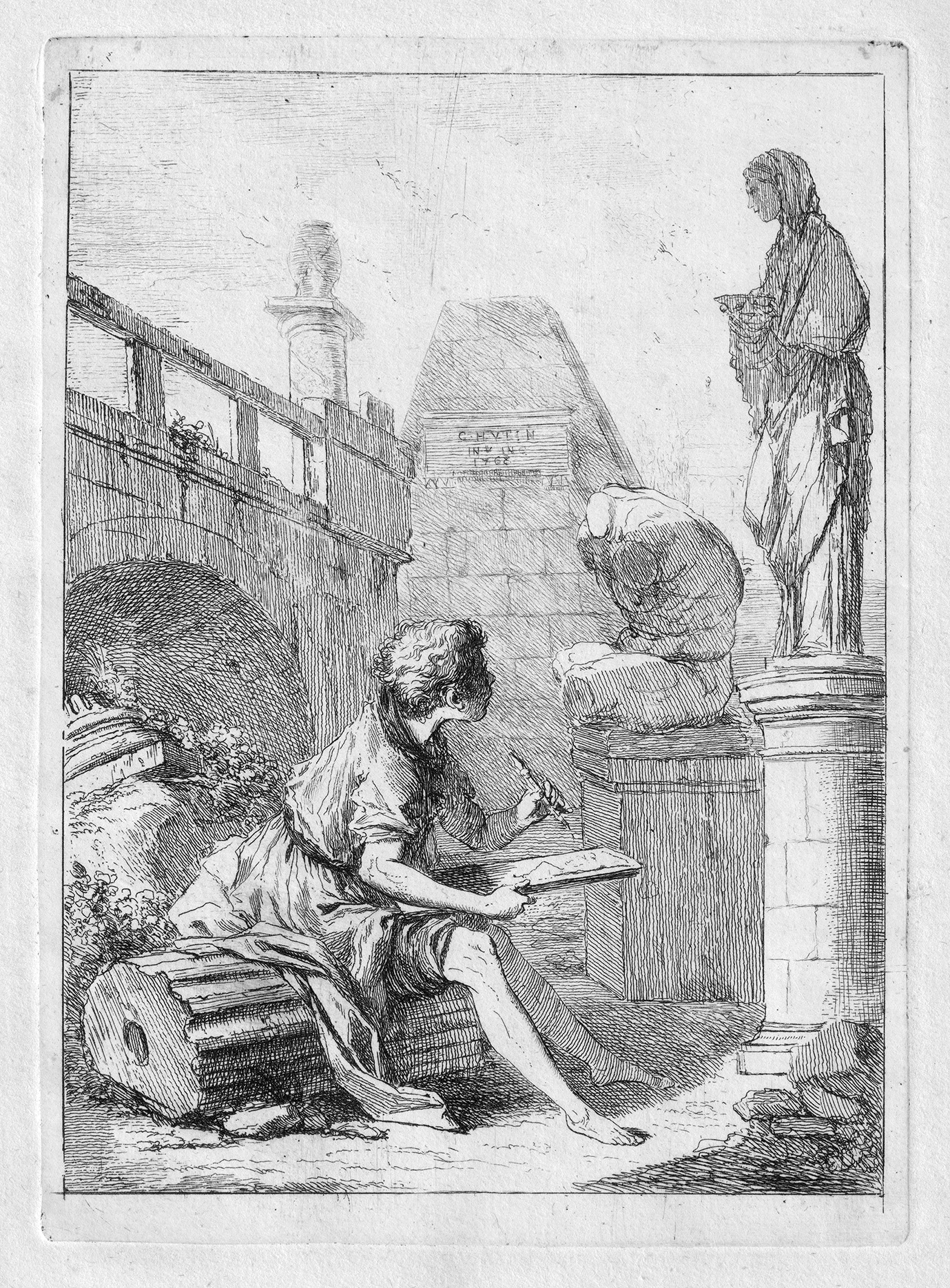Loading the page ...
Charles François Hutin
(1715 Paris – 1776 Dresden)
The Draughtsman. Etching. 19.5 x 14.1 cm. 1768. P. de Baudicour 20 I (of II).
The sculptor, painter and printmaker Charles Hutin was first introduced to painting by François Lemoine in Paris. In 1737 he went as a pensionnaire to the Académie de France in Rome, where he was to remain until 1744. While there he devoted himself mainly to sculpture under the guidance of Sébastien Slodtz. After his return to Paris he was admitted to full membership of the Académie royale in 1747. Shortly afterwards, in 1748, Hutin had a surprising stroke of good fortune when he went, together with his brother, Pierre, to Dresden to enter the service of the Elector August II of Saxony. He was to work in the Saxon royal capital until his death. One of Hutin’s first tasks was to collaborate on the compilation initiated by C. H. von Heinecken under the title Recueil d’Estampes d’après les plus célèbres tableaux de la Galerie Royale de Dresde, whose first volume appeared in 1753. Hutin did the preliminary drawings for this extensively illustrated reference work, which were transferred to the printmaking medium by a team of well-known French reproductive engravers. Subsequently Hutin distinguished himself mainly as a painter. In 1762 he was appointed director of the old Dresden Painting Academy and also “Master Academician and Historical Painter”. After the founding of the new Academy in 1764 he occupied a leading position in this institution until his death.
While in Dresden, Hutin produced a small printed oeuvre of his own, which he published in 1763 under the title Recueil de différents sujets composés et gravés par Charles Hutin à Dresde. In addition to subjects from the Bible, mythology and antiquity along with ornamental depictions, the series contains this charming portrayal of a boy sat drawing against a backdrop of ancient architecture with the torso of Belvedere and the statue of a vestal virgin in the middle ground. The etching is a characteristic example of Hutin’s light, agile and varied technique and of the tight, very fine hatching patterns he uses. Its refined, elegant classicism is typical of the era of Louis XV. This is an extremely rare, early impression of the print before the addition of the letter “c” on the left and the number “1” in the right-hand margin.
A very fine, nuanced impression with wide margins around the distinct platemark. Minor staining at the bottom right, small crease on the right, other minor ageing, otherwise in excellent condition.
Contact us for further information